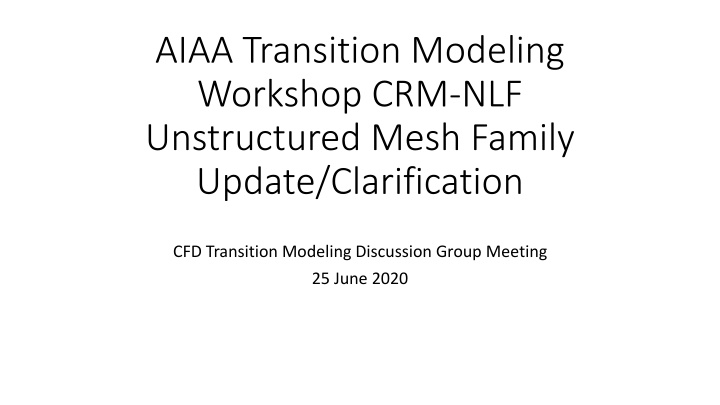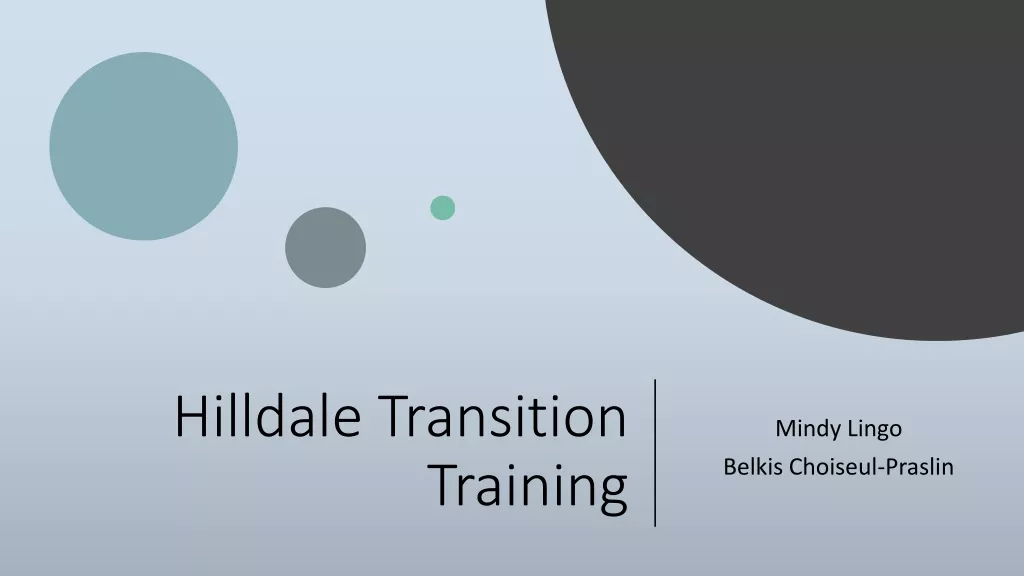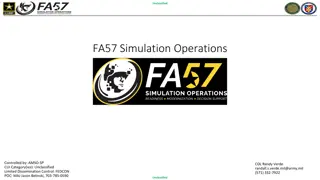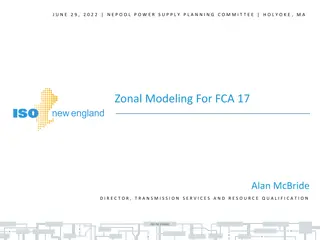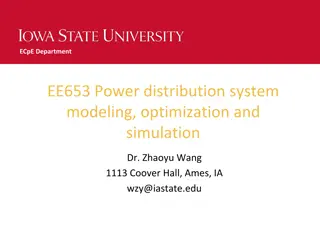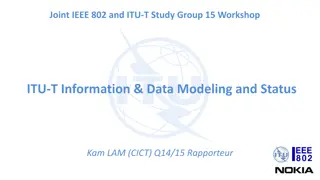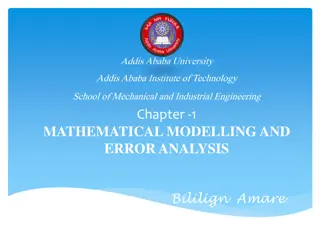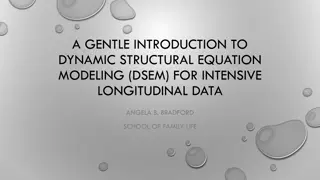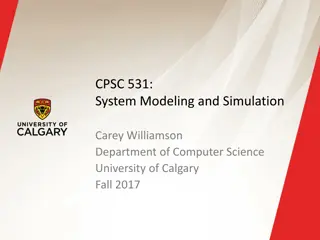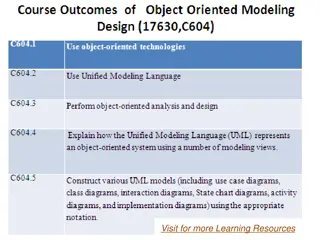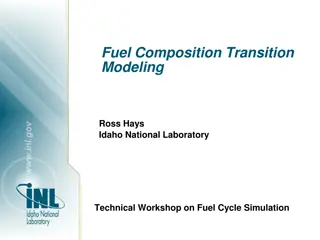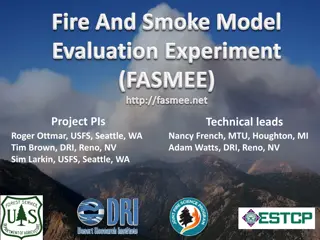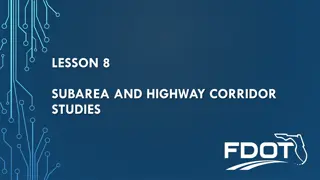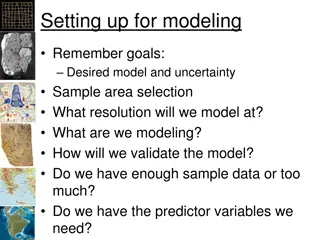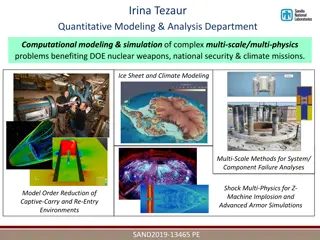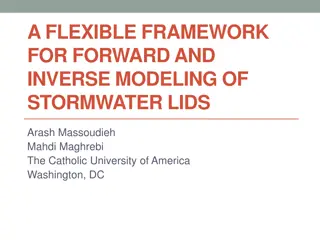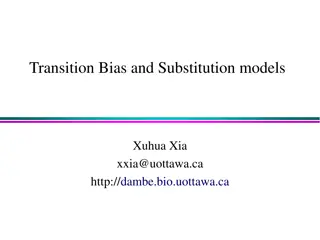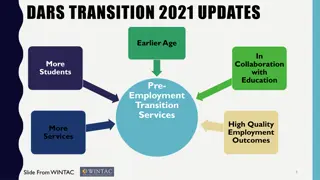AIAA Transition Modeling
AIAA organized a workshop discussing CRM-NLF transition modeling with an emphasis on unstructured mesh families. The meeting took place on June 25, 2020, and delved into CFD transition modeling, addressing key aspects and insights. Participants engaged in productive discussions aiming to enhance understanding and application of transition modeling concepts.
Download Presentation

Please find below an Image/Link to download the presentation.
The content on the website is provided AS IS for your information and personal use only. It may not be sold, licensed, or shared on other websites without obtaining consent from the author.If you encounter any issues during the download, it is possible that the publisher has removed the file from their server.
You are allowed to download the files provided on this website for personal or commercial use, subject to the condition that they are used lawfully. All files are the property of their respective owners.
The content on the website is provided AS IS for your information and personal use only. It may not be sold, licensed, or shared on other websites without obtaining consent from the author.
E N D
Presentation Transcript
AIAA Transition Modeling Workshop CRM-NLF Unstructured Mesh Family Update/Clarification CFD Transition Modeling Discussion Group Meeting 25 June 2020
Overview All meshes courtesy of Steve Karman of Pointwise, Inc. Two series of meshes currently available at https://transmodels.larc.nasa.gov/CRM-NLF-unstructured-meshes/ (named Family0 and Family1) Both series have tet-only and prism-tet versions available Issues elevating both Family0 and Family1 meshes to higher- order third series incoming (Family1A), should be available soon with both Q1 and Q2 versions
Family Distinctions Family0 Uses as provided CRM-NLF geometry Unstructured surface domain on wing Issues elevating due to sharp trailing edge on the fuselage Family1 Truncated trailing edge on the fuselage Diagonalized structured surface domain on wing Issue elevating, this time due to geometry tolerances at wing root Family1A Family1, with increased surface spacing at wing root to bypass geometry tolerance issues experienced in Family1
Family Details Family0 Tet Series Q2 Tet Series # nodes Prism-Tet Series # Tets 1365616 1857284 2409675 3022310 3662404 Refine Series A B C D E ~TE_dim 8 10 12 14 16 F delta S 0.00002325 0.0000186 0.0000155 1.32857E-05 0.000011625 GR # nodes 2688873 4445569 6754044 9698135 13323119 # Tets 15913437 26370305 40126609 57686816 79321147 # Tets 15913437 26370305 40126609 # nodes 2688873 4445569 6754044 9698135 13323119 #Pyrs 46963 68475 90203 119910 150960 #Pris 4817965 8125357 12512176 18141562 25118941 1.25 1.25 1.2 1.195440625 1.160397208 1.135996911 1.118033989 1.16666667 1.14285714 Tet Series = CRM-NLF_[A,B ].cgns Prism-Tet Series = CRM-NLF_P-T_[A,B ].cgns Family1 Q1 Tet Series Q2 Prism-Tet Series Refine Series 4 6 8 10 12 14 16 TE_dim 4 6 8 10 12 14 16 F delta S 0.0000465 0.000031 0.00002325 0.0000186 0.0000155 1.32857E-05 0.000011625 GR ~Curvature Angle # nodes 264125 856446 2959071 5532428 9290729 14448679 21226320 # Tets 1523093 5011020 17515860 32835568 55244067 86029854 126514198 # nodes 2075591 6775861 23530723 # nodes 264125 856446 2959071 5532428 9290729 14448679 21226320 # Tets 436685 982451 1730518 2739936 4065882 5683341 7685855 #Pyrs #Pris 355704 1326781 5228862 9979184 16981613 26673699 39465023 0.66666667 2.5 16 9648 24113 49378 79040 116673 162708 216637 0.75 1.666666667 10.66666667 1 1.25 8 1.25 1.2 1.195440625 1.160397208 1.135996911 1.118033989 6.4 5.333333333 4.571428571 1.16666667 1.14285714 4 Tet Series = CRM-NLF_mesh[4,6,8,10 ].[mesh_format] Prism-Tet Series = CRM-NLF_P-Tmesh[4,6,8,10 ].[mesh_format]
Recommendations Plan to provide all three families Suggest using Family1 or Family1A Participants planning on using higher-order meshes should stick with Family1A Be sure to document which family and refinement levels you are using
